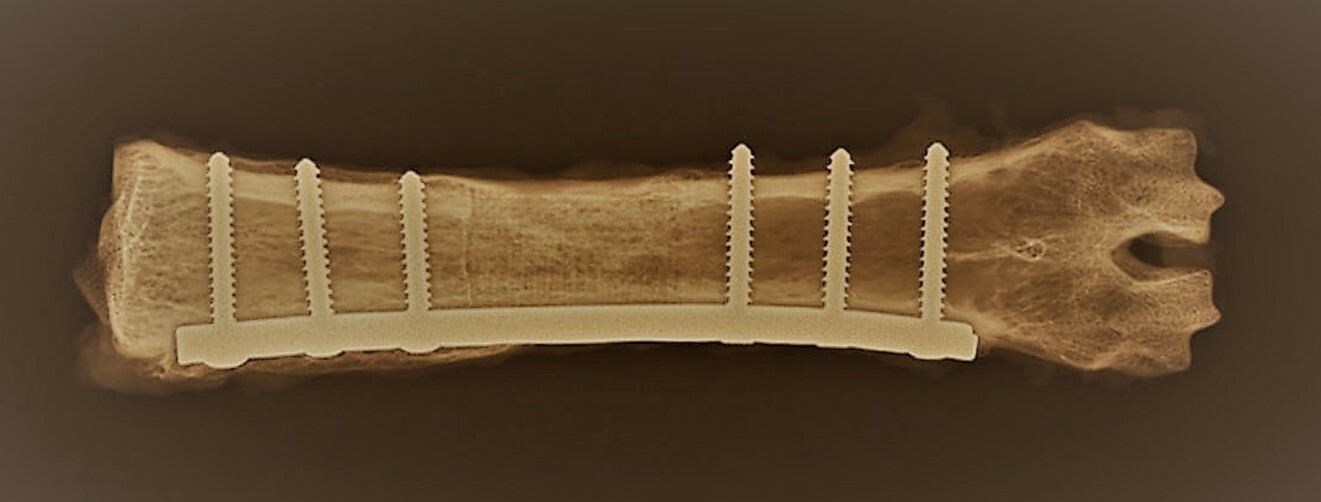APIOS
Stimulates bone regeneration


Benefits
- Osteoinductor film easy to produce and use
Key words
- Implants
- Osteoinduction
- Osteoconduction
- Biopolymers
Intellectual Property
- 2 patents
Laboratory
- LMGP
Institutions
- CNRS
- GRENOBLE INP-UGA
Linksium Continuum
- Maturation
- Incubation
Context
The repair of major bone defects of critical size remains a challenge in orthopaedic, maxillo-facial and dental surgery. The reference technique is still the autologous bone graft, but this is limited in terms of the quantity of material available and, in particular, is very painful for the patient. Implantable biomaterials with a metal, polymer or ceramic base are an alternative, but they must be optimised for their performance to be improved. In fact, none of these implants is capable of actively stimulating the stem cells we have in our bodies.
Technology
APIOS is a bioactive implant manufactured by 3D printing. It consists of a biomimetic film made from natural polymers, which enables an active principle (osteo-inducing proteins) to be stored locally, activating bone regeneration. This film can potentially be used on all types of implants, whatever their nature or shape (screw, cage, etc.). |
Advantages
The film has a strong capacity to retain bioactive proteins and regulates the quantity of proteins distributed. It actively stimulates bone regeneration. It is applied locally to the surface of the implant, which considerably reduces the dose required for bone regeneration at the site of the lesion. The bioactive implant is ready to use. It can be dried and stored for at least two years, and can be sterilised by irradiation. |
State of progress
The film has been fully characterised using physico-chemical and microscopic techniques at different spatial scales. Its production, sterilisation and dry storage have been established and are reproducible.
Proof of osteoinduction of the film on ectopic and bony sites has been established on small animals (mice, rats) and two pre-clinical studies on large animals (pigs and sheep) have been successfully carried out. A clinical study is planned for the first half of 2026.
Applications
- Maxillo-facial surgery
- Orthopaedic and spinal surgery
- Dental surgery
- Repair of injuries
- Biomaterials

